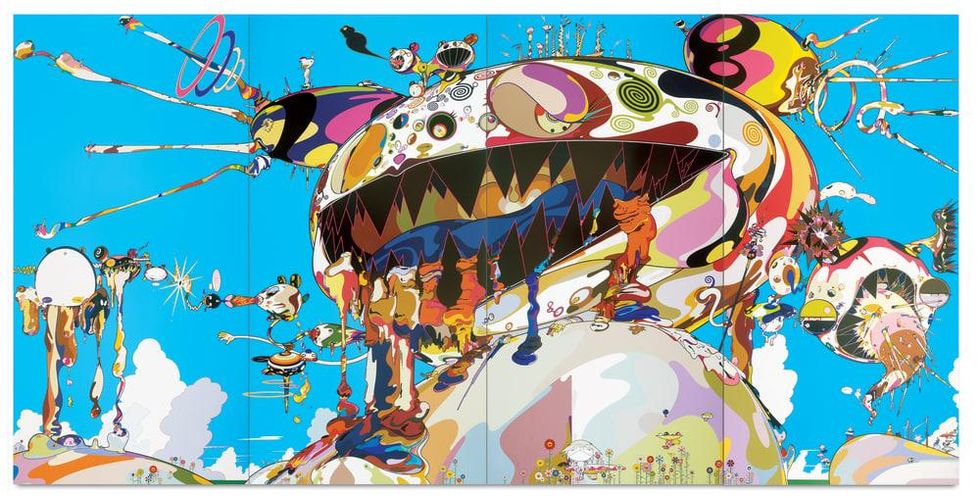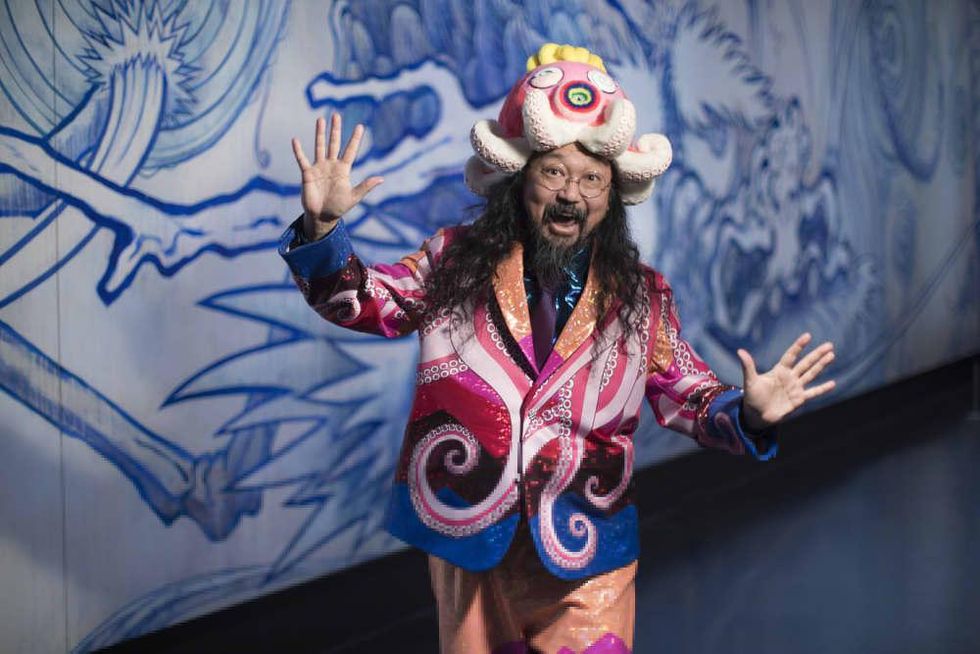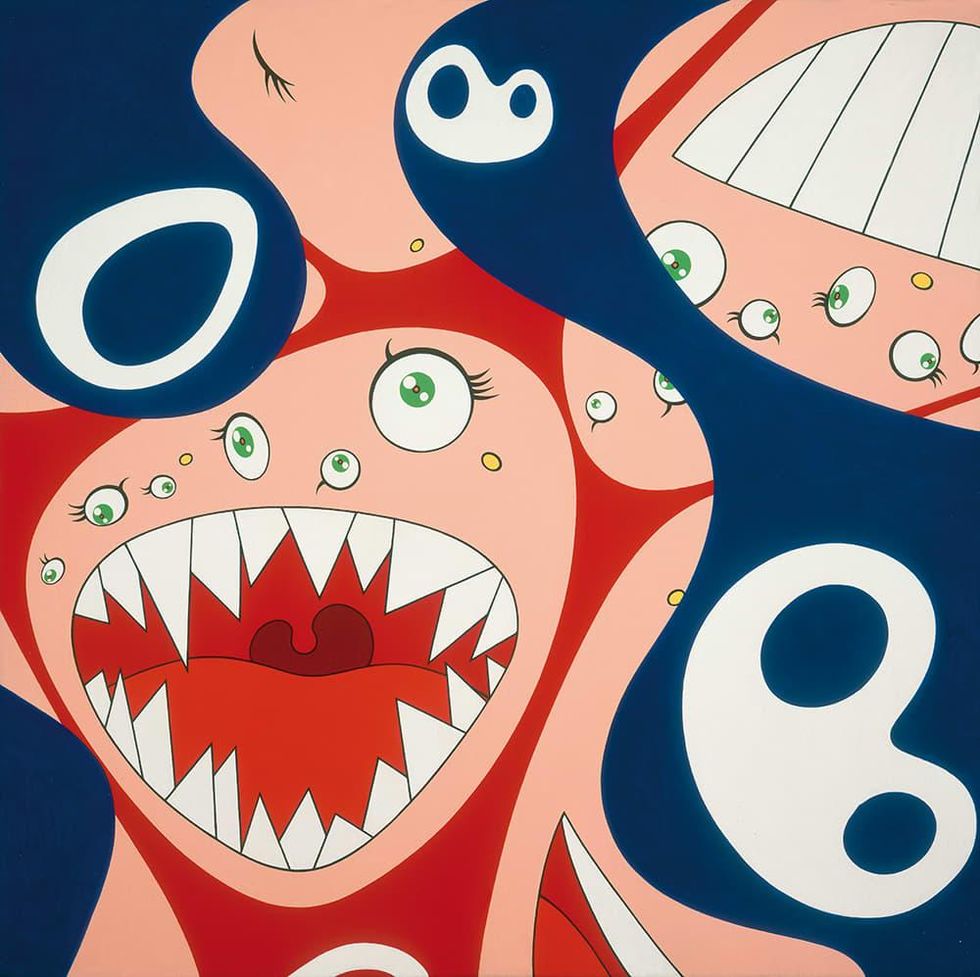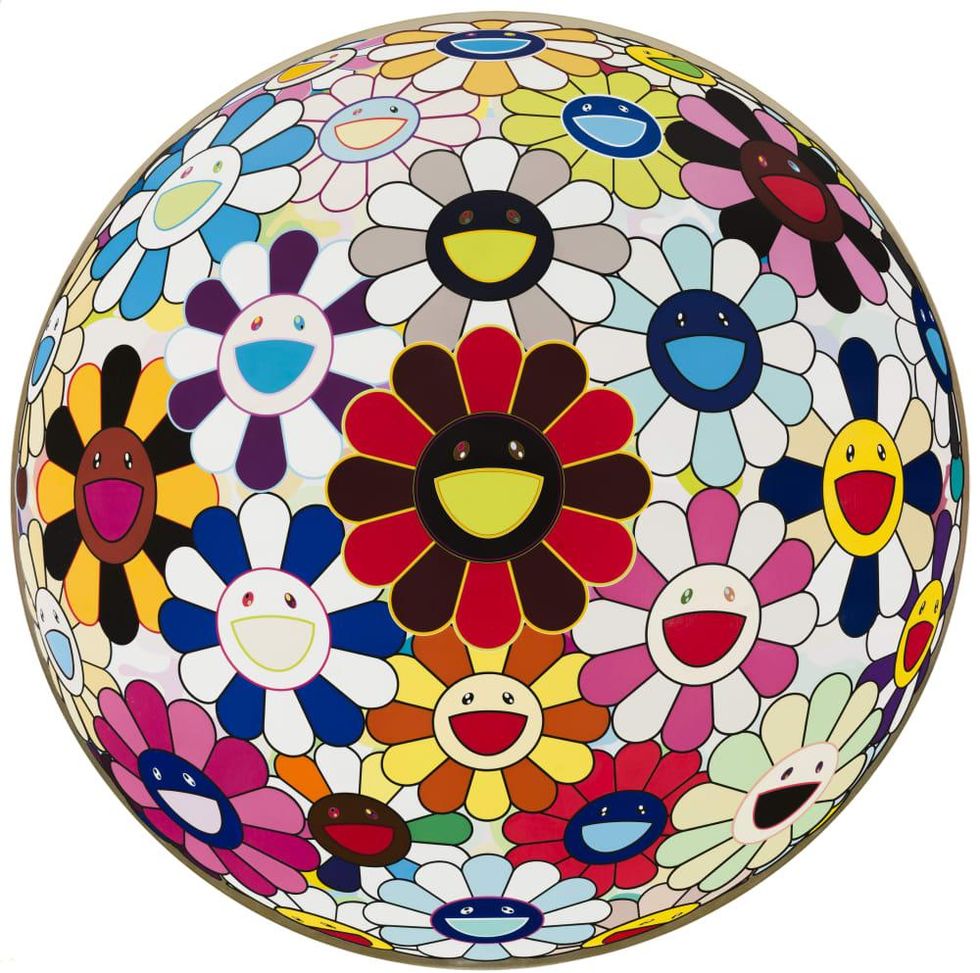King of Pop
Japanese superstar Takashi Murakami elevates painting in Fort Worth
Instantly recognizable for his stuffed animal headdresses, colorful costumes, and cheery visage, Japanese artist Takashi Murakami has evolved past the rarified environs of the art world to become a bonafide pop culture icon.
His collaborations with the likes of musicians Pharrell Williams, Kanye West, and Kid Cudi and designers Marc Jacobs (for Louis Vuitton) and Virgil Abloh (of Off-White) have helped Murakami earn the title of the "Japanese Andy Warhol." Yet somewhere in this cult of personality, his reason for being renowned — his extraordinary ability to master color and scale — has perhaps been overlooked more than it should.
Hopefully, the ambitious new retrospective entitled "Takashi Murakami: The Octopus Eats Its Own Leg," opening June 10 at the Modern Art Museum of Fort Worth, will rectify this. Curated by the Museum of Contemporary Art Chicago's chief curator Michael Darling, the show proves once and for all that Murakami's aesthetic — anime-inspired and "superflat" as it may be — lives less in the world of cartoons than it does in the canon of fine art.
A chief supporter of Murakami since he first viewed a 1997 show at Blum & Poe's tiny Santa Monica gallery, Darling had long felt that the artist's oeuvre didn't receive the respect it deserved.
"When I first saw the work it was unlike anything else I'd ever seen," Darling recalls. "I realized how deep it is, and how rooted it is in Japan's post-war history. Even Mickey Mouse and Disney being implanted on Japan really changed the way Japanese culture evolved, and I felt Murakami understood that in a nuanced and unflinching way. He's still a difficult figure there — he picks at the scabs of Japanese history and shows people what they don’t want to see."
The "incredible respect" that Darling felt for Murakami led him to coordinate the 2001 group Superflatshow, featuring the artist at the Museum of Contemporary Art Los Angeles. Through the years, the two kept in touch, and a visit to Murakami's Japanese studio in 2012 inspired Darling to curate a more extensive exhibition of the artist's paintings.
"I was blown away by the scale and intricacy of the work he was making, so I came back to Chicago and tried to figure out to present this," says Darling. "I wanted people to see that he was not just a showman or man who knows how to participate in pop culture. I thought if we just focus on his painting, it would allow people to focus on what makes him Murakami."
"Octopus," which originally opened last summer at the Museum of Contemporary Art Chicago, gathers over 50 paintings from various points in Murakami's career, along with a handful of important sculptures, to tell the story of an artist who is in a constant state of evolution.
Titled after a Japanese folk saying that alludes to rejuvenation (an octopus chews off a damaged leg to ensure survival, knowing a new one will grow in its place), Murakami feeds off Japanese history and his prior imagery to push his process in new and more psychedelic ways.
"There's a surface reading, and it seems very easy to read," says Darling of the work. "But there's also an insane amount of craft and complexity involved and amazing conversations generated about painting. Once people see the whole timeline, it starts to make a bit more sense — there's this constant struggle and pushing, and the complexity grows and grows."
Perhaps most interesting in "Octopus" is the inclusion of some of the artist's earliest canvases, such as Nuclear Power Picture. With its shadowy image and layers of textural paint, it couldn;t be further from Murakami's poppy cast of characters, which include Kakai, Kiki, and Mr. DoB, who also appear as paintings, sculpture, and wallpaper within the museum's environs.
In newer, giant-sized paintings finished with layer upon layer of color, Murakami further refines his visual language, particularly in his recent series of "Arhats," or Buddhist monks. Inspired by the massive 2011 Japanese earthquake and tsunami, these works draw on classical elements of Buddhist and Japanese culture while offering a rare glimpse into Murakami's humanity. For him, creativity is as enervating as it is elevating for the viewer.
"In order for an idea to pop up, I have to create this sort of mental state that is empty to keep my mind and soul open for that inspiration to come," explains Murakami. "It's like constantly playing chess, trying to make that last move in order to get to that idea. It's a long process, and very trying process."
Darling hopes that "Octopus" will allow both the casual viewer and serious Murakami fan to see beyond the celebrity and skin deep into the heart of a man who pours much more than paint onto his hyper-colored canvases.
"I want that serious viewer to come away thinking, 'I guess I didn't give Murakami enough credit,'" says Darling. "This really is an amazing body of work in an incredibly serious career. Likewise, I'd want the more casual viewer who tried to buy his skateboard deck also see that there's this incredible amount of ambition and craft and seriousness behind [the paintings]. It's been great to have a reason to circle back to him and be a bit of proselytizer about how important I think he is, and also just seeing the audience's reaction and response."
---
"Takashi Murakami: The Octopus Eats Its Own Leg" runs June 10-September 16 at the Modern Art Museum of Fort Worth.
Tan Tan Bo Puking - a.k.a. Gero Tan, 2002. Acrylic on canvas mounted on board. 141 ¾ x 283 ½ x 3 in. (360 x 720 x 7.7 cm). Private collection, courtesy of Galerie Perrotin. © 2002 Takashi Murakami/Kaikai Kiki Co., Ltd. All Rights Reserved.



